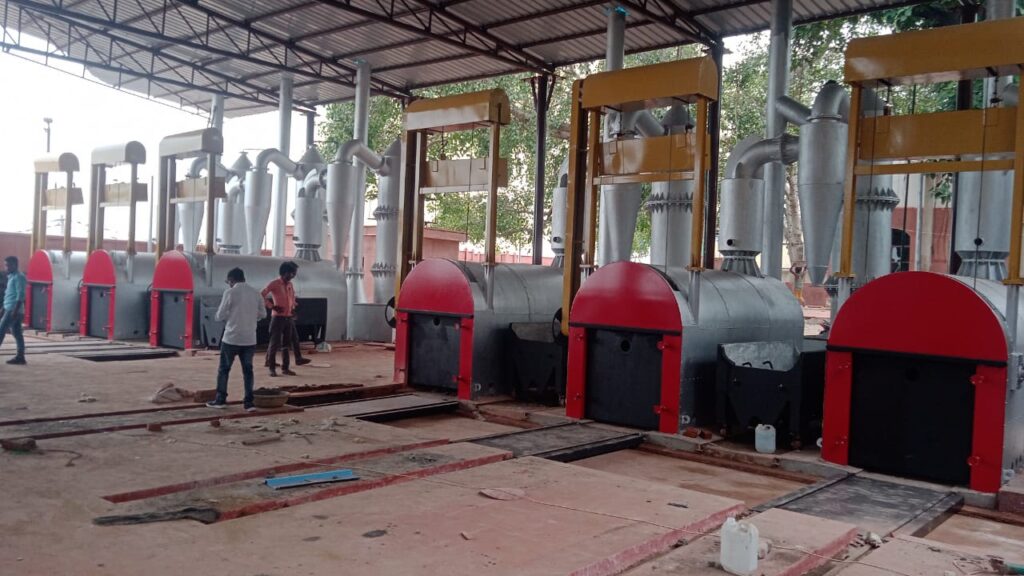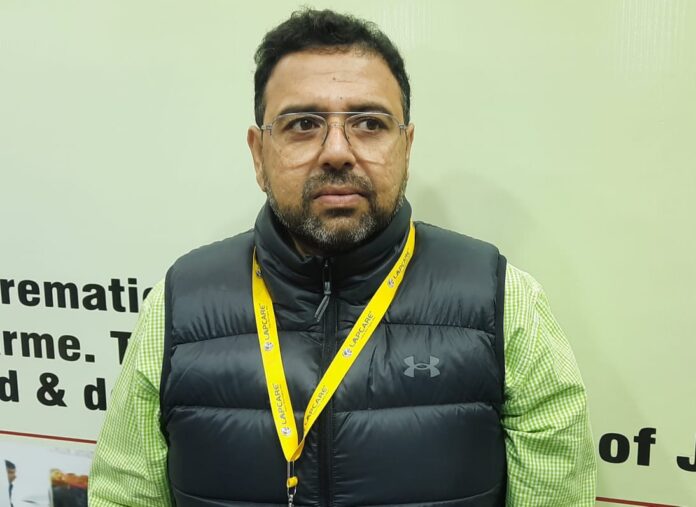Established in 2001, URJA Gasifiers Pvt. Ltd. comprises a group of highly experienced and dedicated engineers and technocrats. Their commitment lies in the development of renewable energy, energy-efficient, and environmentally friendly products.
The company has forged strategic partnerships by signing Memorandums of Understanding (MoUs) with Madan Mohan Malviya Technical University and IIT (BHU). These collaborations foster various research and development projects as well as implementing technology upgrades.
Among the array of energy-efficient products crafted by URJA Gasifiers, the URJA Antyeshti System stands out. This innovative product centers around a wood-based controlled combustion cremation system. It provides a sustainable solution for carrying out the last rites of the deceased while adhering to Hindu rituals.
Sudipta Acharya, a Project Director at URJA Gasifiers, highlights its efficacy in reducing carbon footprints during an interview with The Interview World. Now, let’s delve into the key highlights from his insightful conversation.
Q: What sets the URJA Antyeshti System apart from the traditional cremation process, highlighting its unique features and advantages?
A: Our state-of-the-art self-sustainable cremation facility leverages modern technology and adheres to Hindu rituals. In Hindu cremations, we observe three crucial elements: Kapalkriya, Panch Samhita, and Mukhagni.
This cutting-edge facility, operating with only 125 kg of wood, boasts full mechanization and a solar-based scrubbing system, ensuring complete self-sustainability. Municipalities adopting this plant eliminate the need for third-party support during installation.
One of the most remarkable aspects of this facility is its affordability. Unlike the typical cremation cost ranging from Rs. 4000 to Rs. 5000, our plant offers cremation services at a mere Rs. 800 to Rs. 900. Successfully implemented in Chandigarh, the municipality commissioner’s enthusiastic endorsement has prompted interest from other municipalities. Currently, our Chandigarh plant efficiently handles 8-10 cremations daily with its two furnaces.
We’ve equipped the solar system with a battery backup to address operational challenges during nighttime. Additionally, we’ve implemented a half-HP pump typically used for water applications. This pump, with its capacity, adequately fulfills the requirements. Furthermore, a self-supported chimney of 100 feet has been integrated into the system.
The entire system operates on a self-sufficient model, eliminating the need for external power sources. The scrubbing unit, requiring only a half HP motor, has been seamlessly transitioned to solar power, further solidifying the plant’s self-sustainable model.
Q: What specific measures or initiatives has your plant implemented to effectively address and promote sustainability?
A: In the current situation, this plant contributes three crucial elements, thereby offering three key advantages to the environment. Firstly, it operates as a fully self-sustainable entity. Secondly, it directly mitigates deforestation. Thirdly, it significantly reduces the carbon footprint associated with traditional cremations.
Global leaders, including those in the G20, have been vociferous about carbon credits. Even developed nations are actively engaging in discussions about carbon credit. But what does it entail? The conventional method of cremation using wood emits approximately 1.8 kg of carbon monoxide per kilogram of wood burned. Considering an average body weight of 80 kg, a single open-wood cremation releases nearly 950 kg of carbon monoxide. In contrast, our innovative plant emits only 225 kg of carbon monoxide per cremation, marking an impressive 80% reduction. Consequently, 80% of the carbon credit goes to the respective municipality or Nagar Parishad.
To put this into perspective, a traditional open-wood cremation requires 400 kg of dry wood for an average body weight of 80 kg, totaling 480 kg. Uncontrolled combustion results in a residue of approximately 20%. In our controlled combustion process, the residue is minimal, standing at only 2%. Notably, the residues from cremations, particularly in Hindu rituals, often find their way into water bodies, contributing to water pollution. By adopting our technology, we address this environmental concern.
Reducing residue within the municipal scope not only alleviates water pollution but also curtails the need for recycling solid waste. According to the International Institute of Pollution Sciences, approximately one crore people pass away annually, a staggering 97% opt for open-wood cremations. Only 3% choose electric or CNG crematoriums. Our initiative focuses on addressing the environmental challenges associated with the majority, ensuring a sustainable and responsible approach to cremation practices.
Q: How does your system address Kapalkriya, an integral aspect of the Hindu cremation process?
A: In the current setup at Kapalkriya, a furnace with gates is strategically positioned. Once the bogie is introduced into the system, the Mukhagni and Panch Samhita rituals take place within the bogie. After a specific duration in the furnace, the next step involves opening the furnace gate and performing the Kapalkriya. One crucial aspect of this plant is its adherence to Vastu principles.
A chimney is necessary in the southern part due to Hindu Shastra guidelines, which dictate that the head of a deceased body should face the northern side. Consequently, the furnace gate is situated in the northern part of the scenario. It’s worth noting that this entire process only requires one and a half hours, and ashes can be collected within two hours. Contrary to the traditional belief of waiting until the next day, scientific reasoning supports immediate collection to minimize air pollution.
Q: How much does the construction and implementation of this plant entail in terms of overall costs?
A: There are two main categories of costs associated with this project: electromechanical and civil. The civil costs vary based on the extent of your civil work. To establish a solid foundation, you’ll need both a shed and the necessary infrastructure. This project requires three essential cost-free civil elements. Firstly, due to its solar-driven nature, a shed is necessary. Additionally, chimney foundations and furnace foundations are crucial components of the project, forming the three fundamental aspects of the civil work.
Q: How has the market responded to your products?
A: We currently have 110 units installed across India, with our largest project situated in Bihar. Subsequently, we have expanded our presence to various other states. As individuals seek our expertise as technical advisors, they initiate the implementation process. Our products have gained widespread acceptance in numerous municipalities. Notably, we recently completed an installation in Chandigarh, and we are actively engaged in a collaboration with the Mumbai municipality. We have also received proposals from several municipalities in Maharashtra. I am confident that municipalities in different states can also take advantage of our system.




Thanks for sharing. I read many of your blog posts, cool, your blog is very good.
There are definitely a number of details like that to take into consideration. That is a nice level to bring up. I offer the ideas above as normal inspiration but clearly there are questions just like the one you convey up the place crucial thing will probably be working in sincere good faith. I don?t know if best practices have emerged round issues like that, however I’m positive that your job is clearly identified as a good game. Each boys and girls feel the influence of just a moment’s pleasure, for the remainder of their lives.